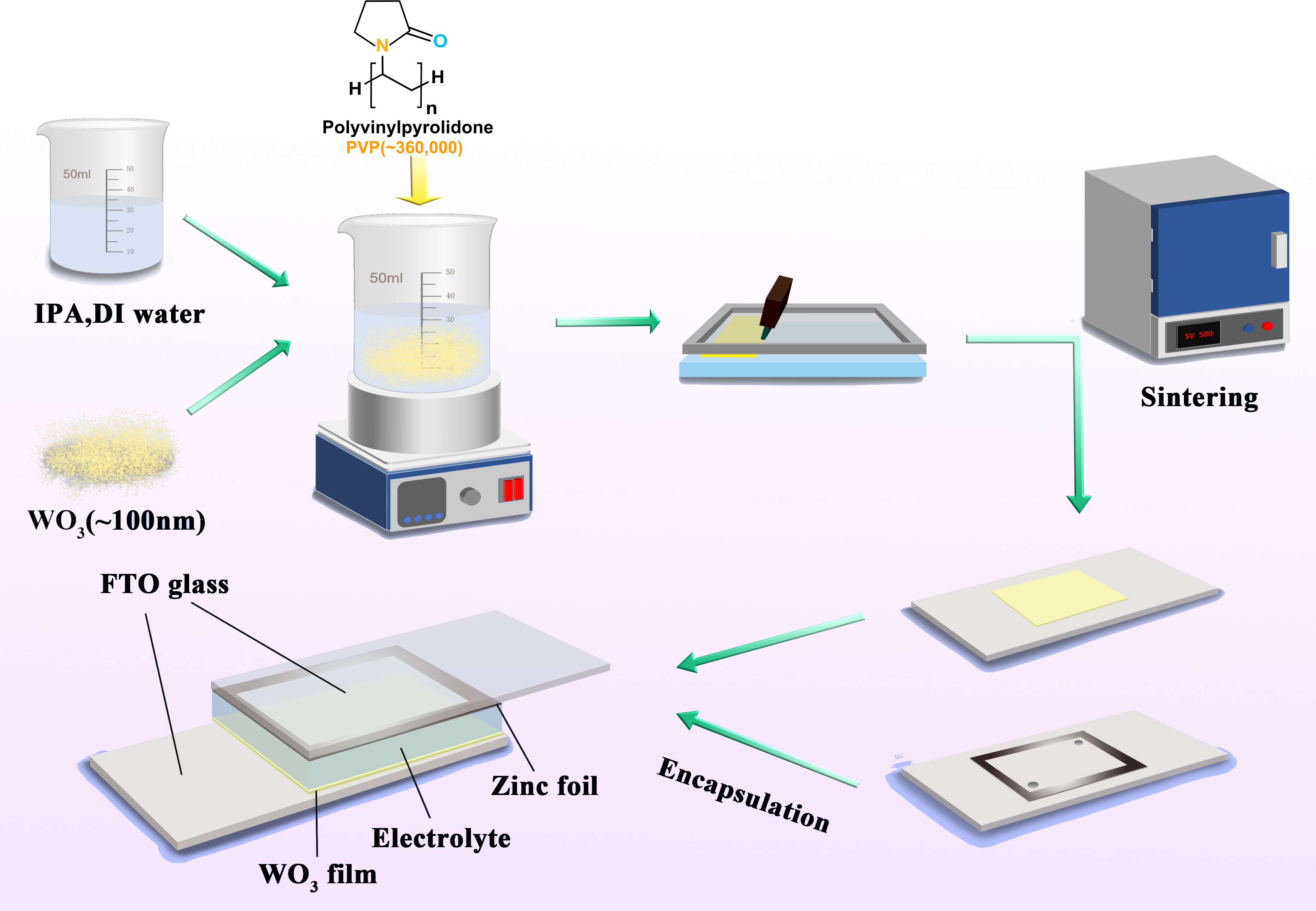
Electrochromic devices possess a sandwich-like structure and can change their color by changing their optical properties such as absorbance and transmittance through the application of voltage. It is currently a hotspot in the field of electrochemical display research and has significant applications in wearable electronics, response sensors, and flexible displays. This study uses tungsten trioxide (WO3) as the cathode color-changing material, zinc foil as anode, and a water-based ink prepared by mixing nano-WO3, solvent, and polyvinylpyrrolidone (PVP) as the thickener in a predetermined ratio to meet the viscosity, surface tension, and particle size requirements of screen printing. The WO3 ink is then transferred onto a fluorine-doped tin oxide (FTO)-coated conductive glass through screen printing, and after sintering at
Taolin Zhang, Zhicheng Sun, Ting Wang, Rui Ma, Siying Guan, Ruping Liu, "Method and Performance Study of Preparing Electrochromic Devices by Screen Printing Technology" in Journal of Imaging Science and Technology, 2025, pp 1 - 7, https://doi.org/10.2352/J.ImagingSci.Technol.2025.69.3.030408
 Find this author on Google Scholar
Find this author on Google Scholar Find this author on PubMed
Find this author on PubMed

